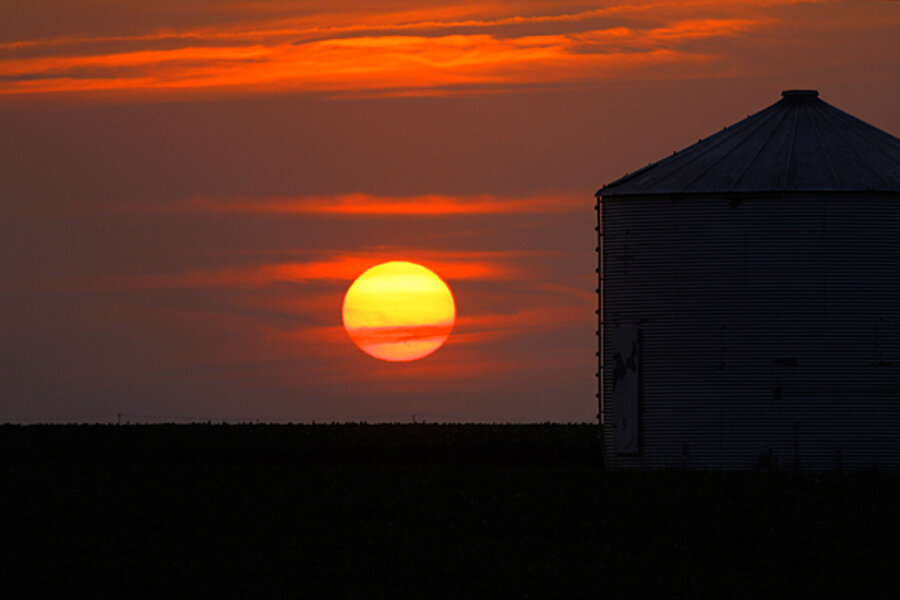Hottest July on record: Dust Bowl redux?
Loading...
| Atlanta
If August is feeling a tad cooler than normal, it’s probably because the month you just left behind – that would be July – was historic for its heat. July just became, in fact, the hottest month ever – at least in the 118 years people have been keeping track of daily temperatures across the land.
Average temperature for the Lower 48, according to the National Oceanic and Atmospheric Administration, hit 77.6 degrees in July, handily beating the previous record, 77.4 degrees, set in July 1936 – at the height of the Dust Bowl.
Unless the rest of the year turns unseasonably cool for the great swaths of the US that saw record heat – basically all states except for Washington State – the record heat readings for July suggest that 2012 is likely to go down as the hottest year on record in the US.
Why? For one thing, the first seven months of this year were all off-the-charts hot, at least when measured against historical readings. Additionally, more daily temperature records have been set so far this year than in all of 2011.
The Dust Bowl analogy is apt, at least in part. The record heat sparked a national drought, the sheer geograpic spread of which hasn’t been rivaled since 1956. About 20 percent of the country is experiencing severe or extreme drought conditions, and estimates of the corn yield currently are off by at least 15 percent as parts of the Midwest continue to bake, largely unslaked, as harvest approaches. The drought could take a $50 billion bite out of the US economy before it’s all over.
Hot temperatures drove evaporation, which in turn created drier soils, which in turn made it feel hotter. Dry, hot conditions also helped fuel record wildfires in Colorado, where, for some residents, it felt at times like the whole state was aflame.
Indeed, heat-related news dominated much of the nation’s attention in July, especially after a surprisingly strong line of thunderstorms left millions of people in the mid-Atlantic without power for days, leaving them sweltering without air conditioning as the heat wave bore down.
Given that July marked the fourth 12-month span in a row setting record temperatures, and that it may be the high point of a record hot year, links to global warming from greenhouse gas emissions have been noted by scientists as entirely plausible. Worth noting: while the US landmass represents only 4 percent of the globe, global average temperatures in June also amounted to the fourth hottest in recorded history.
But the record heat in the US can also be tied to naturally occurring weather patterns, including nuances in the rotation of the North Atlantic Oscillation, a climatic phenomenon that, with great variability, controls wind patterns across the US and how storms track across the North Atlantic.
In July, the oscillation, in essence, backed up massive high pressure systems moving across the US, leading to a pattern of searing hot days that stoked the natural processes that produce drought.






